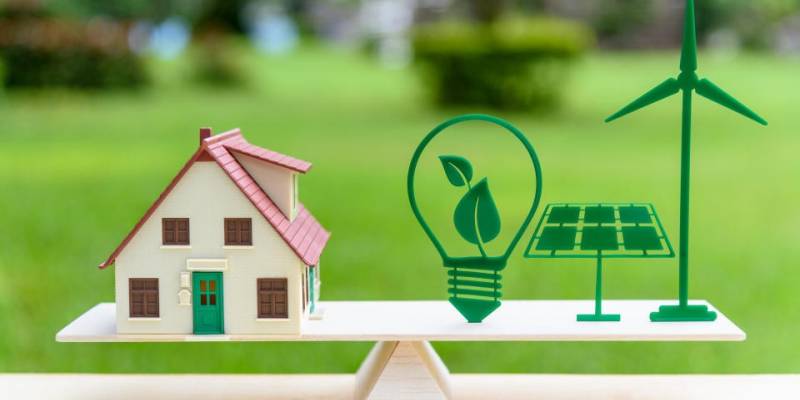Latest news

26 Jul 2024
Strategies for an Energy Efficient Home
The rising cost of electricity, the obvious consequences of climate change reflected in the news and a greater awareness of responsible consumption are just some of the reasons why more and more people are interested in how to make their homes more sustainable.
One of the big challenges in Spain is to promote sustainable construction. Although current regulations are increasingly demanding more environmentally friendly buildings, the reality is that, according to data from 2016, more than half of the housing stock in our country was built before 1980.
What do these figures mean? They indicate that most buildings still have a long way to go to become sustainable and reduce their energy consumption. In the meantime, we can implement measures inside our homes to reduce consumption and make them more environmentally friendly.
What is sustainable housing?
Before offering some tips on how to have a more sustainable home, it is important to understand this concept.
A sustainable home is one that promotes responsible consumption, reducing energy consumption, taking advantage of natural resources and encouraging recycling. All of this with the aim of minimising the environmental impact of both the home and its construction.
Today, the construction of sustainable housing involves an exhaustive monitoring of the entire process: from the selection of materials to the planned activities of the inhabitants. The aim is to create homes that are comfortable, safe and comfortable, but also environmentally friendly.
6 Steps to an Energy Efficient Home
Improving Home Insulation
Windows are one of the critical points through which most heat and cold is lost in a home, so it is essential that they are well installed and close properly. Checking that they are properly sealed will prevent the entry of hot or cold air, thus reducing the need for heating or air conditioning.
Double glazing or ensuring that windows are properly sealed with silicone will also contribute significantly to improving the insulation of your home.
Natural light and LED lighting
Wherever possible, allow natural light to illuminate your home. As well as being a free source of light, it will reduce the need for artificial lighting, resulting in significant savings in energy consumption. If you are looking for a new home, make sure it has plenty of windows facing south, south-west or south-east, as these orientations provide the most natural light.
For interior lighting, LED lights are recommended due to their lower electricity consumption and lower environmental impact, as they help reduce CO2 emissions. Although their initial cost may be slightly higher, LED lights are highly efficient and have a considerably longer lifespan. This initial investment will be reflected in significant energy savings on your electricity bill.
Use energy-efficient appliances
When Purchasing or renewing your appliances, in addition to considering their technical characteristics, pay special attention to their energy consumption.
Opt for appliances rated A or B, as, although their initial cost may be higher, they consume less energy. This additional investment in the short term will translate into significant savings on your electricity bill in the long term.
Saving water
To optimise water use, one of the most effective tips is to use the dishwasher. Although it may seem counter-intuitive, the dishwasher not only offers greater convenience, but also represents a considerable water saving compared to washing by hand. However, it is important to use it only when it is completely full to maximise its efficiency.
Appliances and sockets: switch them off when not in use
Have you heard of phantom power? It is a common phenomenon in households, caused by the ‘standby’ mode of devices such as televisions and computers. These appliances continue to consume energy even when they are not in use.
To be more sustainable, make sure these devices are completely switched off. The same applies to mobile phone chargers, so unplug them when not in use. Another option is to use smart plugs to manage energy consumption more efficiently.
Heating savings
Remember that the ideal temperature is between 19 and 21°C. Did you know that increasing the heating by 1°C can increase energy consumption by 7%? It is preferable to maintain a constant temperature, as setting the heating to a very high temperature immediately causes a significant increase in energy consumption.
If you want to arrive home and find it at the right temperature, you can set the heating an hour earlier. In this way, you will avoid the need to turn up the temperature drastically when you arrive, which, as mentioned, would generate unnecessary expenditure due to the increase in consumption.
By implementing these tips, making your home a sustainable space is easier than you think - start today! Reducing your consumption not only benefits your pocket, but also the environment and everyone's quality of life.









